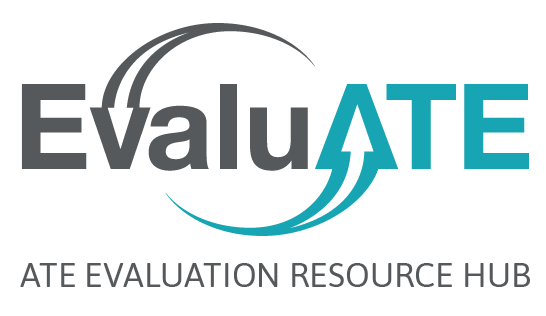Articulating project outcomes is easier said than done. A well-articulated outcome is one that is feasible to achieve within the project period, measurable, appropriate for the phase of project development, and in alignment with the project’s theory of change. A project’s theory of change represents causal relationships – IF we do these activities, THEN these intended outcomes will result. Understandably, project staff often frame outcomes as what they intend to do, develop, or provide, rather than what will happen as a result of those project activities. Using logic models to situate intended outcomes within a project’s theory of change helps to illustrate how project activities will result in intended outcomes.
Since 2008, my team and I have served as the external evaluator for two ATE project cycles with the same client. As the project has evolved over time, so too have its intended outcomes. Our experience using logic models for program planning and evaluation has illuminated four critical roles we as evaluators have played in partnership with project staff:
- Educator. Once funded, we spent time educating the project partners on the purpose and development of a theory of change and intended outcomes using logic models. In this role, our goal was to build understanding of and buy-in for the need to have logic models with well-articulated outcomes to guide project implementation.
- Facilitator. Next, we facilitated the development of an overarching project logic model with project partners. The process of defining the project’s theory of change and intended outcomes was important in creating a shared agreement and vision for project implementation and evaluation. Even if the team includes a logic model in the proposal, refining it during project launch is still an important process for engaging project partners. We then collaborated with individual project partners to build a “family” of logic models to capture the unique and complementary contributions of each partner while ensuring that the work of all partners was aligned with the project’s intended outcomes. We repeated this process during the second project cycle.
- Methodologist. The family of logic models became the key source for refining the evaluation questions and developing data collection methods that aligned with intended outcomes. The logic model thus became an organizing framework for the evaluation. Therefore, the data collection instruments, analyses, and reporting yielded relevant evaluation information related to intended outcomes.
- Critical Friend. As evaluators, our role as a critical friend is to make evidence-based recommendations for improving project activities to achieve intended outcomes. Sometimes evaluation findings don’t support the project’s theory of change, and as critical friends, we play an important role in challenging project staff to identify any assumptions they might have made about project activities leading to intended outcomes. This process helped to inform the development of tenable and appropriate outcomes for the next funding cycle.
Resources:
There are several resources for articulating outcomes using logic models. Some of the most widely known include the following:
Worksheet: Logic Model Template for ATE Projects & Centers: http://www.evalu-ate.org/resources/lm-template/
Education Logic Model (ELM) Application Tool for Developing Logic Models: http://relpacific.mcrel.org/resources/elm-app/
University of Wisconsin-Extension’s Logic Model Resources: http://www.uwex.edu/ces/pdande/evaluation/evallogicmodel.html
W.K. Kellogg Foundation Logic Model Development Guide: https://www.wkkf.org/resource-directory/resource/2006/02/wk-kellogg-foundation-logic-model-development-guide

Except where noted, all content on this website is licensed under a Creative Commons Attribution-NonCommercial-ShareAlike 4.0 International License.






 EvaluATE is supported by the National Science Foundation under grant number 2332143. Any opinions, findings, and conclusions or recommendations expressed on this site are those of the authors and do not necessarily reflect the views of the National Science Foundation.
EvaluATE is supported by the National Science Foundation under grant number 2332143. Any opinions, findings, and conclusions or recommendations expressed on this site are those of the authors and do not necessarily reflect the views of the National Science Foundation.